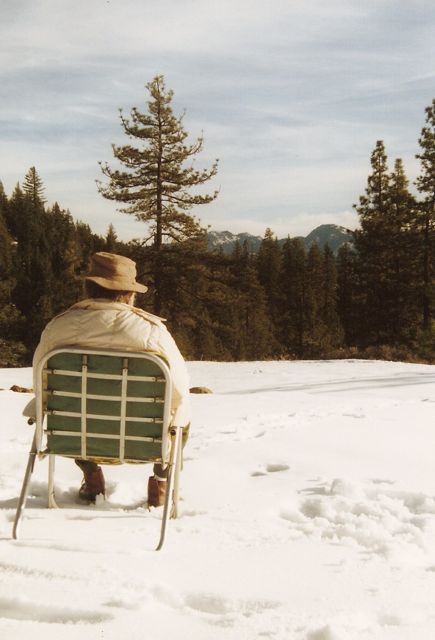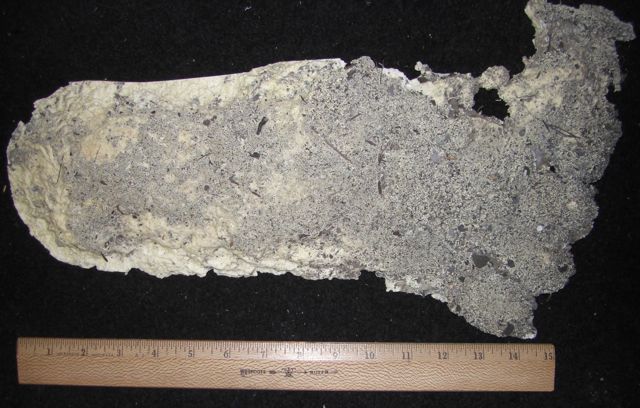The last 40 years has seen much discussion about Bigfoot/ Sasquatch/ Wild man footprints. There have been college professors that have stepped into our arena to make claims about the origins of many of these prints. NABS has done extensive research into this area and believes many of the answers can be found in the work by professionals from years past. We will post this work and allow our readers to make to reach their own conclusions.
••••••••••••••••••••••••••••••••••••••••••••••••••••••••••••••••••••••••••••••••••••••••••••••••••••••••••••••••••••••••••••••••••••••••••••••••••••••••••••••••
In the late 1960's through the 1980's a small group of researchers from the San Francisco Bay Area conducted extensive research in Northern California. The group was led by George Haas. One of George's trusted members was Archie Buckley. Mr. Buckley had expertise in the foot, lower body mechanics and stride associated with walking. The report below illustrates the professionalism that Archie applied to Bigfoot research. NABS wishes to thank Rhea Buckley for allowing NABS to re-print this report.
Footprints
By Archie Buckley
Summer 1977
In the span of 40 years of field investigative work I have probably examined the imprints and stride characteristics of a dozen different Bigfeet in California Sierra Mountains and Trinity Alps.
In studying their footprints I find that weight bearing is DIRECTLY OVER THE ASTRALAGUS, with initial pressure points on the heel (calcaneus) and the 1st., and 5th., metatarsals. I find no evidence of anatomical deviation from the human foot except in kinetic function.
In this respect I find considerable more lateral movement, particularly in the phalanges (toes) and metatarsals than civilized man whose feet, due to the restriction of shoes, have lost much of their natural functional movement. Such lateral range provides for greater mobility in movement through forest and over mountainous rocky terrain.
Their feet contain 26 bones so grouped as to form two arches, longitudinal and transverse. I have never examined a series of imprints that did not contain evidence of both. …with toes pointing straight ahead and with little or no outward rotation. But this is not to suggest that they never ambulate with their feet angled outward. On several occasions I have tracked them up steep alpine mud and snow slopes where they resorted to herringbone patterns for more effective traction.
The presence of arches indicate that Bigfoot is an excellent upright walker. This of course suggests anatomical similarity to man and none to the anthropoid ape. Apes cannot functionally walk upright because their pelvis is long, their legs are short and the muscles of their backs and legs are relatively weak. The Bigfeet are obviously superb bipedal walkers. They ambulate with a slight hip, knee and ankle flexion that provides the proper body mechanics for mountain movement and concealment. Like man, possessed of powerful extensors of the back, hips and legs (basic for erect posture) they can move through the woods with ease while hunting or while remaining concealed, like prehistoric Indian, leaving little or no trace of their presence. This flexed position, even in motion, allows for the selective placement of the forward striding foot before relieving the weight of the following foot. Result? Concealment; he is a master of it. No matter how he places his foot, ball, heel or full, it is a controlled gait that leaves few if any indentations for the tracker to follow.

*Archie Buckley near the Yolla Bolly Wilderness
It is this flexed gait that gives the honest but erroneous impression that the arms of the Bigfeet are longer and the legs shorter than they really are. The combination of body hair and the tremendous gluteal muscles (buttocks) give an underslung appearance, particularly when viewed from uphill or downhill positions.
They are blessed with tremendous vital capacities and physical endurance. On several occasions when I have been close on their trail, they have left me lurking while they scampered up- without any difficulty- almost sheer granite cliffs.
This climbing ability has endowed them with powerful extensor muscle of the lower extremities. Their gluteal muscles, i.e., buttocks, are extremely large, particularly in the gluteus maximus, which is a lowerful extensor of the hip and a great climbing muscle. In attempting to track them down through the years, I have always been cognizant of the above. But it was not until 1969, after viewing the 1967 Bluff Creek Footage, that my own impressions were confirmed. A key to the authenticity of this footage lies in the size of the rear end of the creature that is the subject of the footage. No hoaxer could have dreamed that up!
Bigfeet are aware that their footprints may betray their presence. I have seen where they used hard ground, rocks and even streams to camouflage their presence. William Hampton, a departed Wintu friend and former roommate of Jim Thorpe at Carlisle, and I, have, on separate occasions, observed where a Bigfoot slid down a mountain on his heels to hide his tracks. On another occasion one of the creatures literally backtracked in his footprints at night in order to prevent me from following his prints next day.
Speaking of footprints, several mistaken theories have developed from studies of casts that did not also include the study of the prints, which the cast was made. One theory is that the Bigfeet are flat-footed. Another is that weight distribution lies more toward the center of the foot, this latter theory being necessary, it seems to justify the flat footed hypothesis. Such a foot structure would not allow for swift and skillful movement over flat ground, let alone mountainous and rugged terrain that the northwestern Bigfoot must traverse. Coupled with ambulation and the physical characteristics of the makers foot, there are four basic factors that determine imprint details. These are weight, motion (both of the maker of the print) incline of the slope and, most important, soil resistance. Because of the variance of soil conditions found in most sets of prints, it is imperative to examine all of the imprints in a set to correctly determine physical details. To illustrate a point: In one set of 27 imprints, made by the same individual in the Trinity National Forest in California, I found footprints that range from 16 inches to 24 inches in length and ¼ inch to 6 inches in depth. They were in four different types of soil conditions. The variances were due to the factors previously mentioned, the most important being the resistance of the soil on which the print maker strode. A foot may slide in soft mulch or pine needles- particularly in motion- thus creating an elongated and false impression. This is becomes fundamental, in studying footprints, to include the variances caused by different soil conditions.
In wet impact soil, found along mountain streams or slightly muddy roads (with a hard surface directly underneath) one can make a cast that gives the impression that the print maker was flat-footed because the cast itself is flat. What happens is that all foot surface, (including, sometimes, the arch) that come into contact with the less resistant outer soil, will, in principle, make approximately the same depth indentations until resistive soil prevents any further penetration. The result? A cast that is a podiatrist’s delight. The common error is in interpolation of the cast and not the imprints. Under the above conditions the arch is the last part of the foot to make contact.
Archie Buckley
Retired Chief of Medicine & Rehabilitation
VA Hospital
Alameda, CA
**This report was transcribed verbatim.
©2011 North America Bigfoot Search
|
|
 |